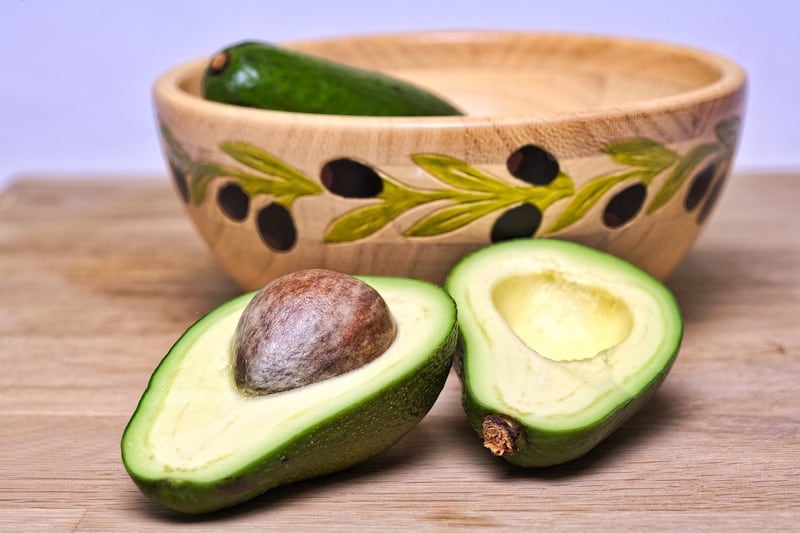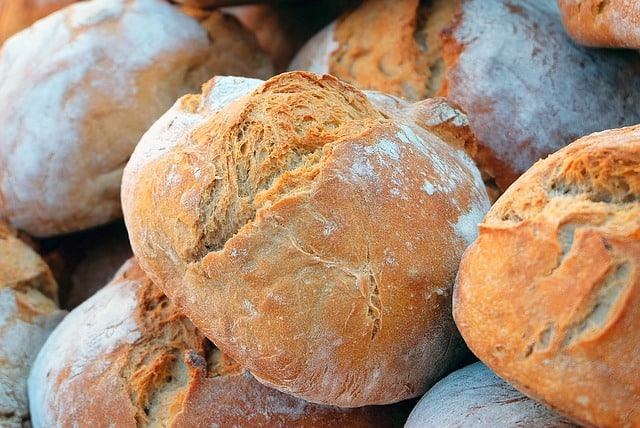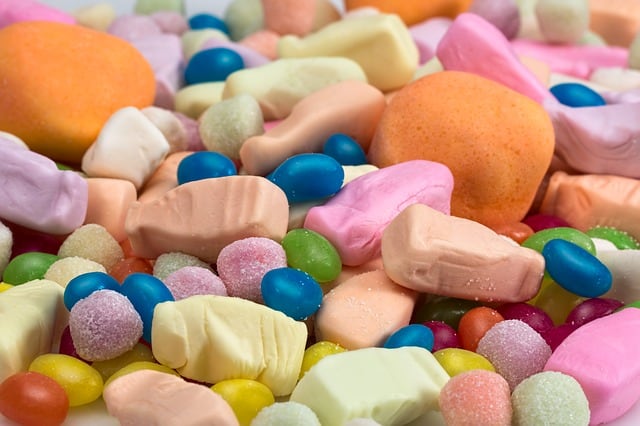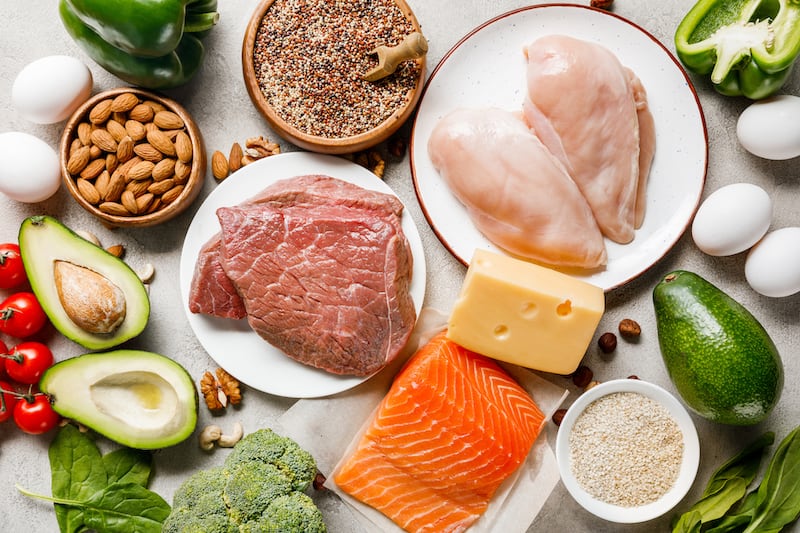We’re hearing that many intermittent fasters are now combining their intermittent fasting (IF) lifestyle with the keto diet to enhance their results or break through a dreaded weight-loss plateau.
What are the benefits of blending keto and IF? Why do people combine these two methods? How do I get started?
What is the Keto Diet?
The Keto Diet: Short for ketogenic, keto refers to the ketones that the liver produces from body fat when a ketogenic eating regimen is adopted. Available blood sugars (glucose) are depleted and the body switches from burning insulin to burning fat as its energy source.
The ketogenic diet includes foods with:
- Very low or no carbohydrates
- Moderate amount of protein
- High amount of healthy fats
While eating keto, carbs are kept to a minimum so there aren’t many to be converted to blood sugars for fuel. Proteins are kept moderate (excess protein can also be converted to blood sugars). Healthy fats are eaten in high amounts to keep you satisfied and feeling full, while also training your body to use fats for energy.
How Keto Works: Within a very short time (usually no more than 48 hours) of following a strict keto diet, your body will use up all its stored glycogen (normally used for fuel) and turn to your fat stores for energy. This starts the process of ketogenesis, where fatty acids are broken down even further to produce ketones called acetoacetate.
Acetoacetate is then converted into two useful ketone substances:
- BHB (Beta-hydroxybutyrate). The preferred energy for our brains and the reason some people report greater mental clarity when in ketosis.
- Acetone. The smelly stuff we excrete that makes our breath yucky when we are in ketosis.
The bad news is that this process results in some stinky breath. The good news – you’re in ketosis!

While in ketosis, you become a fat burner and your body no longer spends time and energy searching for glycogen and burning insulin. Your body learns to tap into its own fat stores for energy and you lose fat (and pounds) not muscle.
Over time, by eating healthy fats, your body becomes more used to using fat as a fuel source and becomes fat-adapted, switching to the fat burning process more easily.
Foods themselves are not really blatantly keto or non-keto, but as the diet has become more and more popular, we hear the word used in conjunction with certain foods.
Bacon is a keto-friendly food, as well as avocados, cheese, some nuts, eggs, and other high-fat, low, or no-carb foods.

You may also hear of “keto-burgers” or “keto-shakes”. These foods contain the components to achieve ketosis (low carb-medium protein-higher fat). But it is the actual fat-burning process that results from limiting your diet to eating these foods that makes them part of a keto diet.
We’ve compiled some great batches of keto recipes to keep you keto-kreative while trying this diet. Keep in mind that to stay in ketosis, you want to keep your carb count at 20 or fewer grams per day.
Strict Keto Got You Down? You’re Not Alone
Following a strict, 20 grams of carbohydrates or less keto plan can be daunting.
Many try it for a short time, but find it extremely difficult to maintain long term, as an eating lifestyle. In fact, one of the most common problems with a keto diet is executing it properly so that you aren’t ready to quit by the second or third week.
Inevitably, keto dieters are faced with real-life situations where bread or other tempting carbs surround them. Whether a conscious choice or a craving creeping in, they end up practicing what is sometimes called “dirty keto” and sabotaging any weight-loss results.
Or, they can give up and give in completely to the lure of luscious carbs, feeling at fault and defeated.

Even worse, they may slowly start to sneak carbohydrates in at every meal, spiking their insulin all day long and never allowing their bodies to get into ketosis and switch over to fat-burning mode. Result? No results!
But wait. It doesn’t have to be that way! There is a way to practice a gentler keto in combination with intermittent fasting, that some find more doable long term.
Combining Keto With Intermittent Fasting
If weight-loss is your goal, combining keto eating with an IF lifestyle may be a great strategy to keep you on track and maximize your results.
Why?
When eating only in a short window of time each day (intermittent fasting) you can be a little less strict with your keto dieting. Instead of sticking with 20 grams of carbs during your eating window, you may be able to go as high as 50 or even 75 grams of carbs, while continuing to eat the keto-recommended moderate protein and ample healthy fats.
This is still far fewer carbs than you would eat with a traditional diet which can include upwards of 200 grams of carbs.
Combined with a long fasting period of 16, 18, or even 20 hours, your body is able to process that amount of carbs fairly quickly. You then set yourself up to switch over to fat burning faster than if you ate a traditional diet during your IF eating window, or even if you ate small amounts of carbs all throughout the day.
Of course sticking to straight Keto (20 grams of carbs or less) during your IF eating window gives you the most bang for your buck, but it isn’t a necessity when practicing IF as well.
You can reap the benefit of your fasting time to help digest and process any slightly higher carb-intake, rather than relying solely on executing a perfect keto diet to move you into ketosis.
How To Get Started With The Keto / Fating Combo
You certainly can deep dive into both plans all at once, but if you aren’t already practicing keto or fasting for 16 hours or so, trying both all at once could set you up for a huge struggle or even failure.
We recommend trying one method and then adding in the other, for maximum success.
Option 1: First Keto, Then Add Intermittent Fasting
Many people find it much easier to transition to fasting if they have first started eating a keto diet.
Focusing on low or no carb foods first helps our bodies become fat-adapted, able to use our own body fat as fuel. This greatly reduces or even eliminates those cravings that crop up when we are running on insulin and dependent on sugar and carbs for our energy.

Some people who start intermittent fasting without first weaning themselves off of carbs and sugar just never get in the groove of IF because their cravings and hunger are too great.
If already eating ketogenically, even if it’s three meals a day and snacks, you will be able to gradually stretch your fasting length more easily. Why? By eating low or no carb, you have already done the hard work of depleting your glycogen stores.
Small amounts are added back in each day, but storage is minimal while eating ketogenically. You are already fat-adapted and no longer craving sugar (insulin) as your source for energy.
Without cravings and headaches, symptoms often felt during withdrawal from sugar and carbs, keto dieters typically have an easier time extending the hours they go without food. That hangry feeling is less likely to appear.
Soon you are successfully fasting 16 or more hours and keeping your carbs to a minimum, too. Even better, by combining the two methods you can allow for an occasionally carb-splurge during your eating window, without fear of completely derailing your plan.
Option 2: First Fasting, Then Add Keto
Other individuals may find it easier to learn to the art of intermittent fasting first, and then add keto to enhance the process later.
Focusing on increasing the number of hours you can fast can be a gradual, gentle process. Simply add an hour or two to the length of your fast until you can consistently go 16 or more hours without any food intake.
Many intermittent fasters don’t worry about their food choices in their eating window. But others find that they either aren’t seeing results or realize they are still consuming too many carbs and proteins in their eating window to benefit fully from their fasting hours.
Enter ketogenic eating!
Once fasting time begins, so does the process of burning-off what was just eaten. But it can take many hours before the real benefits of fasting kick-in, and someone is truly in a fasted state. IFers can often misjudge how long the metabolizing and glycogen-burning processes take, especially if they’ve consumed a high-carb meal.
According to Dr. Ted Nalman, board-certified medical physician, your body spends at minimum, the first 3-5 hours, digesting and absorbing nutrients from the last meal you ate. And if you’ve consumed a high carb meal or added alcohol to the equation, time can be extended to 8 or even 10 hours.
The body is extremely efficient and looks for the easiest substances to convert glycogen for fuel first. It will always seek out available resources to convert to glycogen in this order:
- Sugar Alcohols (ex. Wine, Beer, Hard Liquor)
- Simple Carbohydrates (ex. Desserts, White Breads, Pasts, White Rice, etc)
- Complex Carbohydrates (ex. Fruits, Potatoes, Beans, Whole Wheat Beads, etc)
- Healthy Fats (ex. Avocado, Cheese, Nuts, etc)
- Body Fat
An Example: IF-er Joe
To illustrate the point, let’s take a look at IF-er Joe.
Joe is doing a great job fasting for a solid 16 hours each day. He stops eating after dinner at 8pm and doesn’t eat again until 12 noon the next day. But he isn’t getting any results.
Let’s take a look at his plan:
The Plan:
Joe stops eating at 8pm, after a pasta dinner, bread, some fruit, and 2 glasses of wine. Oh…and a little ice cream and cake for dessert. His carb intake was probably well over 300 grams. He starts “timing” his fast at 8pm and goes to sleep around 11:30pm.
At 7am, Joe wakes up thinking, “Great – I’ve been fasting for 11 hours already. I’ll wait to eat until around 12 noon and I’ll have a nice 16 hour fast under my belt.”
The Problem:
The problem is that at 7am, we don’t even know for sure if Joe is in a fasted-state! While he was sleeping, his body was happily operating on all the glycogen created from his high-carb meal.
First the alcohol from his two drinks had to be metabolized, followed by all the carbohydrates he consumed adding hours and hours to the clock.
Every person is different but most likely, Joe’s glycogen stores might only reach depletion sometime in the morning, giving him only 4-5 hours in the fasted state as a fat-burner.
When he breaks his fast by eating again at 12 noon, he switches his body back to an insulin burning machine rather than a fat-burning one. And so the whole cycle starts over again.
But…if Joe adds even a gentle version of the keto diet into his IF lifestyle, the situation is quite different:
- Joe stops eating at 8pm, but has maintained a keto-friendly meal with healthy fats, moderate protein intake and low carbs. Now when his fast begins his body quickly metabolizes the few carbs he has consumed.
- By morning his glycogen stores are completely depleted and his body enters the fasted state, ready to switch to fat as his energy source for the remaining hours of his fast.
Each day that Joe keeps his carb-levels as low as possible, he allows his body to become more and more efficient at switching over to the fat-burning process.
Eating Keto or even a modified Keto diet enhances his IF lifestyle.
It doesn’t really matter which you prefer to start with but if one or the other isn’t working for you or proves too difficult for you to execute, combining keto and IF may be your answer for happily ever after!




